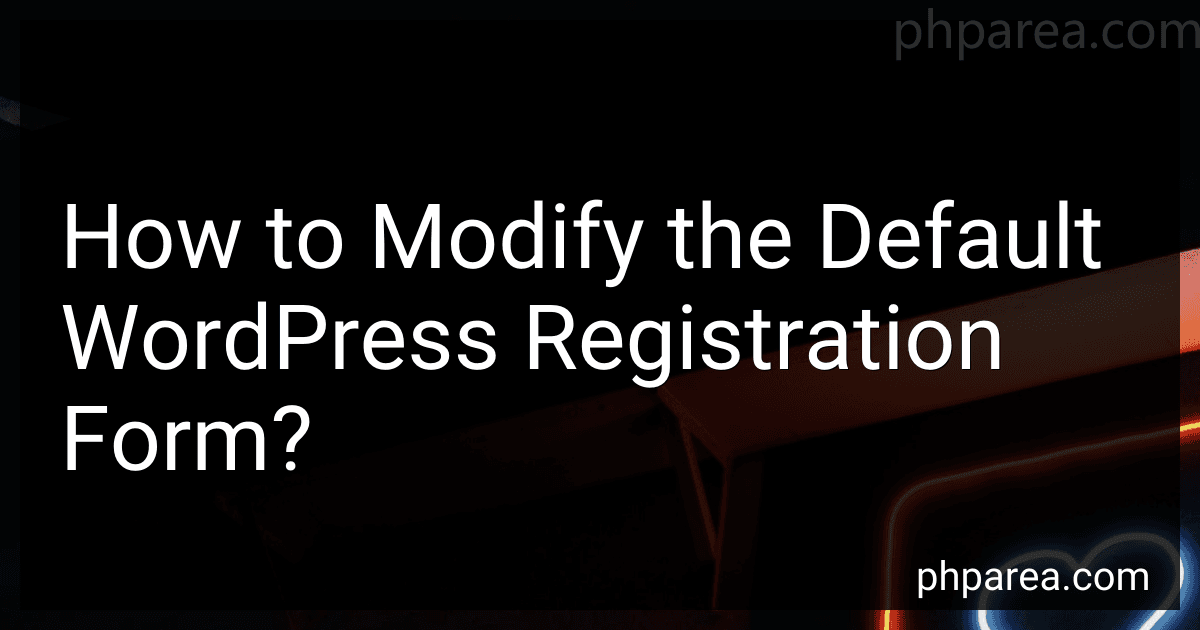Posts (page 104)
-
 5 min readTo delete files older than 7 days using PHP, you can follow these steps:Get the current timestamp using the time() function, which returns the current Unix timestamp.Subtract 7 days (604,800 seconds) from the current timestamp to get the desired threshold.Use the scandir() function to retrieve a list of files in the directory you want to check for deletion.Iterate through each file in the directory.Use the filemtime() function to get the last modified timestamp of each file.
5 min readTo delete files older than 7 days using PHP, you can follow these steps:Get the current timestamp using the time() function, which returns the current Unix timestamp.Subtract 7 days (604,800 seconds) from the current timestamp to get the desired threshold.Use the scandir() function to retrieve a list of files in the directory you want to check for deletion.Iterate through each file in the directory.Use the filemtime() function to get the last modified timestamp of each file.
-
 9 min readTo deploy a TensorFlow model for inference, you can follow these steps:Load the trained model: Begin by loading your pre-trained TensorFlow model in memory. This typically involves importing the TensorFlow library, specifying the model architecture, and restoring the model weights from the saved checkpoint. Prepare input data: Format and preprocess the input data so that it matches the expected input format required by your model.
9 min readTo deploy a TensorFlow model for inference, you can follow these steps:Load the trained model: Begin by loading your pre-trained TensorFlow model in memory. This typically involves importing the TensorFlow library, specifying the model architecture, and restoring the model weights from the saved checkpoint. Prepare input data: Format and preprocess the input data so that it matches the expected input format required by your model.
-
 8 min readTo install WordPress on a server, you will need to follow these steps:Choose a hosting provider: Select a reliable web hosting provider that supports WordPress. Consider factors like server performance, uptime, customer support, and pricing. Purchase a domain name: Register a domain name for your WordPress website. You can either purchase it through the hosting provider or a separate domain registrar.
8 min readTo install WordPress on a server, you will need to follow these steps:Choose a hosting provider: Select a reliable web hosting provider that supports WordPress. Consider factors like server performance, uptime, customer support, and pricing. Purchase a domain name: Register a domain name for your WordPress website. You can either purchase it through the hosting provider or a separate domain registrar.
-
 6 min readDropout is a regularization technique used to prevent overfitting in neural networks. It works by randomly setting a fraction of the input units to 0 at each training step, which helps prevent the network from relying too much on any one particular input feature. TensorFlow provides a convenient way to implement dropout in your models.To use dropout in TensorFlow for regularization, follow these steps:Import the TensorFlow library: import tensorflow as tf Define your model architecture.
6 min readDropout is a regularization technique used to prevent overfitting in neural networks. It works by randomly setting a fraction of the input units to 0 at each training step, which helps prevent the network from relying too much on any one particular input feature. TensorFlow provides a convenient way to implement dropout in your models.To use dropout in TensorFlow for regularization, follow these steps:Import the TensorFlow library: import tensorflow as tf Define your model architecture.
-
 7 min readTo embed an animated SVG file on a WordPress website, you can follow these steps:Convert your SVG file to an animated SVG (SVG animation) using an animation software or code.Open the WordPress dashboard and navigate to the page or post where you want to embed the animated SVG.In the visual editor, switch to the Text or Code editor mode.Locate the desired section or area where you want to add the animated SVG.Insert the HTML code for embedding the animated SVG.
7 min readTo embed an animated SVG file on a WordPress website, you can follow these steps:Convert your SVG file to an animated SVG (SVG animation) using an animation software or code.Open the WordPress dashboard and navigate to the page or post where you want to embed the animated SVG.In the visual editor, switch to the Text or Code editor mode.Locate the desired section or area where you want to add the animated SVG.Insert the HTML code for embedding the animated SVG.
-
 8 min readRecurrent Neural Networks (RNN) are a type of neural network specifically designed for processing sequential data by maintaining an internal memory. TensorFlow is a popular deep learning framework that provides powerful tools for implementing RNNs. Here is an overview of how to implement RNNs in TensorFlow:Import the required libraries: Begin by importing the necessary libraries, including TensorFlow.
8 min readRecurrent Neural Networks (RNN) are a type of neural network specifically designed for processing sequential data by maintaining an internal memory. TensorFlow is a popular deep learning framework that provides powerful tools for implementing RNNs. Here is an overview of how to implement RNNs in TensorFlow:Import the required libraries: Begin by importing the necessary libraries, including TensorFlow.
-
 11 min readTo modify the default WordPress registration form, you can follow these steps:Locate the "functions.php" file in your WordPress theme. This file is usually found in the theme's main directory. Open the "functions.php" file using a code editor. To remove or hide fields from the registration form, you can use the "register_form" action hook.
11 min readTo modify the default WordPress registration form, you can follow these steps:Locate the "functions.php" file in your WordPress theme. This file is usually found in the theme's main directory. Open the "functions.php" file using a code editor. To remove or hide fields from the registration form, you can use the "register_form" action hook.
-
 8 min readBatch normalization is a technique used to improve the performance and stability of neural networks during training. It normalizes the input values by subtracting the batch mean and dividing by the batch standard deviation. TensorFlow provides a convenient way to perform batch normalization using the tf.keras.layers.BatchNormalization layer.
8 min readBatch normalization is a technique used to improve the performance and stability of neural networks during training. It normalizes the input values by subtracting the batch mean and dividing by the batch standard deviation. TensorFlow provides a convenient way to perform batch normalization using the tf.keras.layers.BatchNormalization layer.
-
 15 min readTo remove unused shortcodes from WordPress, you can follow these steps:Identify the shortcodes being used: Determine all the shortcodes that are currently active on your website. Shortcodes are usually wrapped in square brackets ([ ]). Look for shortcodes not being used: Analyze your website's pages, posts, and theme files to identify any shortcodes that are not being used anymore. This could be due to removing plugins or themes that previously utilized those shortcodes.
15 min readTo remove unused shortcodes from WordPress, you can follow these steps:Identify the shortcodes being used: Determine all the shortcodes that are currently active on your website. Shortcodes are usually wrapped in square brackets ([ ]). Look for shortcodes not being used: Analyze your website's pages, posts, and theme files to identify any shortcodes that are not being used anymore. This could be due to removing plugins or themes that previously utilized those shortcodes.
-
 7 min readTransfer learning is a popular technique used in machine learning tasks, and TensorFlow provides comprehensive support for it. With transfer learning, a pre-trained model is used as a starting point for a new task instead of training a model from scratch. This approach saves a lot of time, computational resources, and can improve the performance of the new model.Using transfer learning with TensorFlow involves a few main steps.
7 min readTransfer learning is a popular technique used in machine learning tasks, and TensorFlow provides comprehensive support for it. With transfer learning, a pre-trained model is used as a starting point for a new task instead of training a model from scratch. This approach saves a lot of time, computational resources, and can improve the performance of the new model.Using transfer learning with TensorFlow involves a few main steps.
-
 12 min readTo create a post using WordPress REST API, you can follow these steps:Start by obtaining the necessary credentials to access the WordPress REST API. This usually involves generating an access token or obtaining an API key. Use a tool like cURL or an HTTP client library in your programming language of choice (e.g., Python's requests library) to send an HTTP POST request to the WordPress API endpoint /wp-json/wp/v2/posts. Include the required information in the request payload.
12 min readTo create a post using WordPress REST API, you can follow these steps:Start by obtaining the necessary credentials to access the WordPress REST API. This usually involves generating an access token or obtaining an API key. Use a tool like cURL or an HTTP client library in your programming language of choice (e.g., Python's requests library) to send an HTTP POST request to the WordPress API endpoint /wp-json/wp/v2/posts. Include the required information in the request payload.
-
 7 min readImplementing a Convolutional Neural Network (CNN) in TensorFlow involves several steps:Importing the required libraries: Begin by importing the TensorFlow library and any other necessary dependencies. Loading the dataset: Prepare your dataset by loading the data and performing any necessary preprocessing steps, such as normalization or resizing. TensorFlow provides built-in functions for loading common datasets like MNIST or CIFAR-10.
7 min readImplementing a Convolutional Neural Network (CNN) in TensorFlow involves several steps:Importing the required libraries: Begin by importing the TensorFlow library and any other necessary dependencies. Loading the dataset: Prepare your dataset by loading the data and performing any necessary preprocessing steps, such as normalization or resizing. TensorFlow provides built-in functions for loading common datasets like MNIST or CIFAR-10.